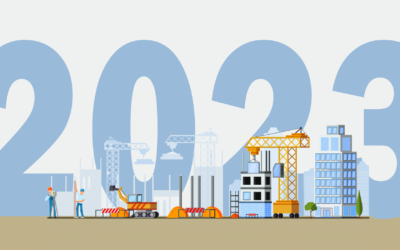How Technology And Diversity Are Changing Construction (For The Better)
This was originally published by Lori Moes, CFO of DJM Design CAD & Coordination, on Forbes in association with the Forbes Finance Council.
I have been in the construction industry for more than 35 years and have watched it transform in many ways. Construction sites today look a lot different than they did a few decades ago. When I started, building plans were hand-drawn, and most meetings were conducted in person. Today, teams on opposite sides of the country meet with videoconferencing software, and project plans come to life with building information modeling (BIM) and virtual reality (VR).
Construction Changes
Technology is not the only thing that has changed construction, either. For much of my career, I have been the only female in construction meetings. I am thrilled to say that this is no longer the case. The increase of diversity across the industry and the encouragement of construction technology by a new generation of workers have allowed sites to become a connected ecosystem with people from various backgrounds.
I believe that this ecosystem cultivated by growing diversity and advancements in technology has benefited construction in obvious ways, such as making the life cycle more efficient, and in more subtle ways like helping to bring new and innovative ideas to the workplace. Both have positively affected revenue flows. Here is a brief analysis of these trends and the positive changes they have caused.
The Benefits Of A Diverse Workforce
In a recent Construction Executive article, FXCollaborative managing partner Tim Milam pointed out the benefits of hiring a diverse workforce. He said, “By attracting and hiring a diverse workforce, with a variety of points-of-view and life experiences, firms can create stronger teams.” Data overwhelmingly shows that this is true. In a groundbreaking study from McKinsey, a diverse organization was 33% more likely to outperform their competition. The same study also showed that companies with diverse boards were 43% more likely to experience higher profits.
Further research reported in a Harvard Business Review article proved companies with higher than average diversity have 19% larger innovation revenues. Marketing platform Cloverpop also confirmed this by showcasing that diverse management makes better business decisions 87% of the time.
The Benefits Realized
Over the past decade, stakeholders have begun to realize these benefits and tried to foster teams that include people from myriad backgrounds. At times, progress feels slow, but it is heartening to see that it is happening. Recent data from Smart Asset shows encouraging steps forward as the number of women working in a construction manager role doubled from 2015 to 2019. Data from the NAWIC (National Association of Women in Construction) shows that the total number of women in construction increased by 14% from 2009 to 2018. While women still only make up a small 9.9% of the construction workforce, it is encouraging to see that the industry is aware of the gender gap and is working to close it.
Women are not the only group changing the construction workforce. In a 2016 interview with Construction Dive, William Frey, author of Diversity Explosion, said, “All the growth in the future labor force will be racial minorities, particularly Hispanics.” Frey’s studies found that 15 million whites will be leaving the labor force between 2010 and 2030 and that 17 million Hispanics, 4 million Asians and 3 million Blacks will be filling their shoes. This information comes as no surprise because data on millennials shows that only 56% are white, making them a more diverse population than previous generations in the U.S. This new wave of workers will not only encourage diversity but be the most diverse generation construction has seen yet.
Diversity Will Encourage Innovation
Adding this new diverse generation to construction will also further technology’s progress. A survey by Microsoft and SurveyMonkey found that 93% of millennials say up-to-date technology is a top priority in the workplace.
This new perspective and tech-savviness are much needed as construction is struggling. While it is one of the oldest and most essential industries, it lost millions of skilled workers after the 2000s recession, and each year the workforce ages and loses more. The recruitment pool needs to expand to fill this gap. As the skilled trades gap is top of mind and the industry emerges from the Covid-19 crisis, it is important to continue encouraging this younger, more diverse workforce because they are essential to the industry’s survival and our financial ecosystem.

As a female executive in a male-dominated industry, I encourage anyone with an interest in construction to go for it. I have faced my share of strange looks and remarks. I particularly remember once when I was pregnant, a male co-worker asked me, “What happened to you?” However, I did not let this or industry politics get in the way of my career.
As technology continues to change construction, it will also open new ways for people of various backgrounds to have a hand in the success of the industry. The construction industry is open and ready for a younger, more diverse generation of workers. Change is coming, and our job is to encourage it.


